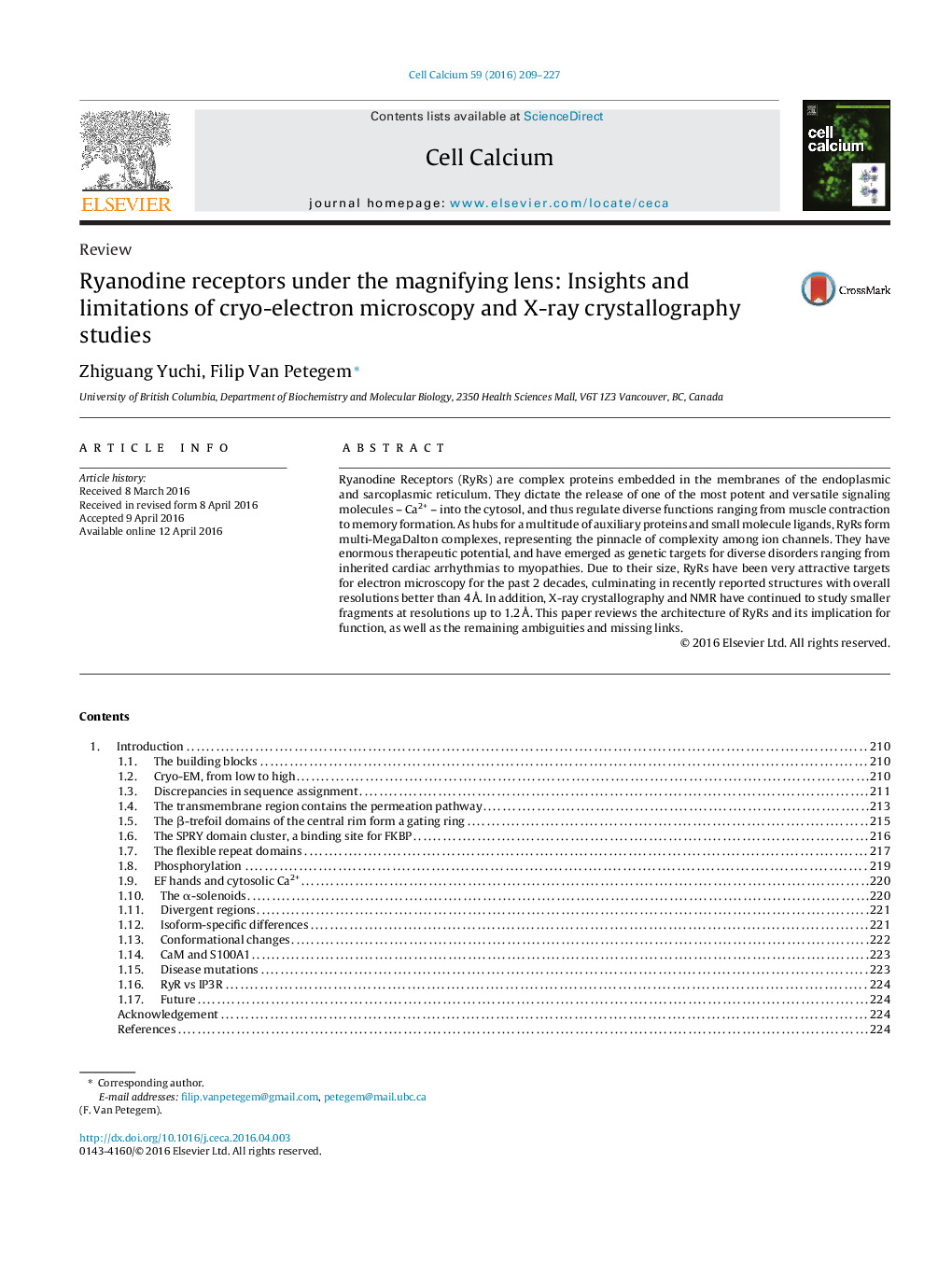| Article ID | Journal | Published Year | Pages | File Type |
|---|---|---|---|---|
| 2165865 | Cell Calcium | 2016 | 19 Pages |
•Recent structural studies of ryanodine receptor using cryo-EM and x-ray crystallography are summarized.•The advances and shortcomings of cryo-EM studies in understanding RyR biology are discussed.•The current advance in understanding the structure-function relationship of ryr-related genetic diseases is reviewed.
Ryanodine Receptors (RyRs) are complex proteins embedded in the membranes of the endoplasmic and sarcoplasmic reticulum. They dictate the release of one of the most potent and versatile signaling molecules – Ca2+ – into the cytosol, and thus regulate diverse functions ranging from muscle contraction to memory formation. As hubs for a multitude of auxiliary proteins and small molecule ligands, RyRs form multi-MegaDalton complexes, representing the pinnacle of complexity among ion channels. They have enormous therapeutic potential, and have emerged as genetic targets for diverse disorders ranging from inherited cardiac arrhythmias to myopathies. Due to their size, RyRs have been very attractive targets for electron microscopy for the past 2 decades, culminating in recently reported structures with overall resolutions better than 4 Å. In addition, X-ray crystallography and NMR have continued to study smaller fragments at resolutions up to 1.2 Å. This paper reviews the architecture of RyRs and its implication for function, as well as the remaining ambiguities and missing links.
Graphical abstractFigure optionsDownload full-size imageDownload as PowerPoint slide
